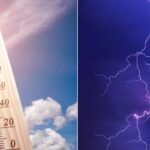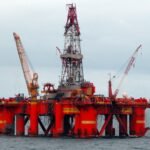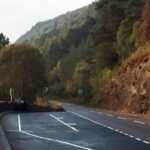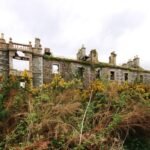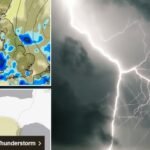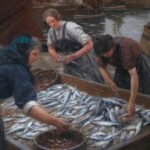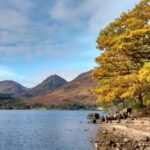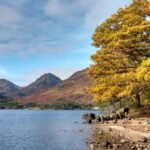Scotland, long defined by its sodden glens and misty highlands, is now finding another seasonal identity: a land increasingly defined by smoke.
In just the past few weeks, Culbin Forest, Glen Rosa on Arran, and Galloway have all burned. According to the Global Wildfire Information System, more of the UK burned by April 2025 than in any full year in more than a decade.
A park ranger on Arran summed up the scale of the damage plainly:
“We’ve lost 10 years of conservation work and effort. We just have to start again.”
Climate, Ignition, and a New Kind of Wildfire
These aren’t isolated accidents. Scientists and emergency services say they reflect a longer-term trend toward more intense, longer-lasting wildfires—fueled by climate volatility, dry vegetation, and human carelessness.
This year’s spring was unusually dry, but such patterns are no longer rare. What meteorologists are calling “hydroclimate whiplash”—a swing from wet to dry conditions—is becoming more common in Scotland and globally. It sets the stage for ideal fire conditions: lush growth followed by parched landscapes ready to ignite.
Scotland is not California. But the conditions that killed dozens and destroyed thousands of homes in the US West—wet spells, drought, wind—are showing up in milder but unmistakable form here.
“As long as climate change keeps happening, this effect keeps increasing,” says Theo Keeping, a wildfire risk modeller at the University of Reading.

More Fires, More Fuel, and More Risk
Traditionally, Scotland’s wildfires burned in spring, when old dry vegetation from the previous year still littered the landscape. But today, fires stretch into summer—and even late summer—driven by changing vegetation patterns and warmer, drier conditions.
According to Group Commander Niall MacLennan of the Scottish Fire and Rescue Service (SFRS) in Inverness, today’s fires are harder to suppress and burn hotter.
“They tend to have higher fuel loads… which gives them greater intensity,” MacLennan explains. Heather above knee height, for instance, contains an enormous amount of combustible energy.
Fires are also appearing in regions never previously considered at risk. In rural areas, homes are increasingly at risk from encroaching vegetation like dry gorse, which can carry flames right to the doorstep.
Can We Prevent Wildfires?
Yes—and no.
The uncomfortable truth is that not all wildfires can be prevented, even with strict regulation and public messaging.
Social media is full of warnings from rangers urging people not to flick cigarette butts, not to light BBQs, not to abandon glass bottles. Yet the same feeds fill up with photos of smouldering campfires on tinder-dry moorland, sometimes directly beneath pine trees.
“It’s almost impossible to exclude all ignitions,” says Keeping. “But education still matters.”
Countries like Portugal have seen some success reducing fire incidents through sustained education campaigns. Scotland is trying too. But where prevention fails, containment becomes everything.
The New Firefight: Smarter, Faster, Local
SFRS is investing in a “smarter strategy” to contain fires as soon as they begin. This includes:
-
Specially trained wildfire units
-
Terrain-appropriate equipment
-
Remote monitoring
-
Local partnerships
A helicopter like the one used in Culbin can dump about 800 litres of water—a surprisingly effective payload, given the scale of some blazes. But such aircraft aren’t always available. In many cases, terrain is so difficult that firefighters must walk in wearing PPE and carrying water.
That’s where local support becomes crucial. Farmers and estate workers with all-terrain vehicles often step in to help firefighters access remote fire zones.
The Cost of Doing Nothing
Wildfires aren’t just destroying ecosystems. They’re expensive. They consume public resources, disrupt rural economies, and reverse years of conservation effort in a matter of hours.
The Arran fire, for instance, devastated large swaths of Glen Rosa, undoing a decade’s worth of work by rangers and volunteers.
Land management is now seen as a frontline issue. Changes in farming or estate practices—especially those that lead to increased vegetation—can inadvertently create fire-prone landscapes.
“Regenerating landscapes to better retain water, creating fire breaks, rethinking vegetation choices… these strategies are only going to grow in importance,” says MacLennan.
Policy Changes and What Comes Next
Recent legislation in the Scottish Parliament now requires that anyone using “prescribed burning” for muirburn or firebreaks be licensed and trained. This formalises previously informal practices, aiming to reduce the risk of well-intended fires spiralling out of control.
Other key strategies being pushed include:
-
Creating fire breaks by removing or burning vegetation
-
Developing lochans (small artificial lakes) as emergency water sources
-
Upgrading evacuation plans in high-risk areas
-
Rethinking housing proximity to flammable vegetation
Scotland’s long-term climate outlook suggests that fire season is here to stay. But as wildfire risk rises, so too does the national conversation about resilience—and responsibility.
Summary: Scotland’s Wildfire Landscape
| Key Factor | Current Trend |
|---|---|
| Wildfire frequency | Increasing yearly, now extending into late summer |
| Fire intensity | Higher due to dense vegetation and dry conditions |
| New at-risk areas | Expanding into regions previously considered low risk |
| Main ignition sources | Human activity: campfires, cigarettes, glass bottles |
| Firefighting challenges | Terrain, access, limited air support |
| Key mitigation strategies | Education, firebreaks, vegetation management, legislation |






